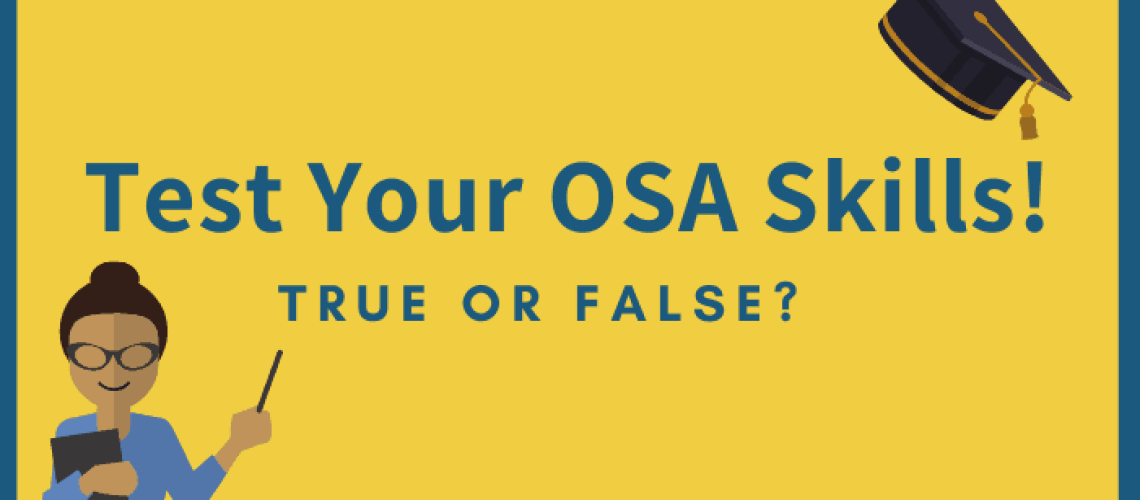
TRUE OR FALSE?
(Answers below)
1. You can choose ONE oral appliance device that will work for every patient.
2. The three major obstacles to successful implementation of airway & breathing disorders management are; training the team, obtaining a diagnosis, and getting paid.
3. Women and men always present the same symptoms for OSA.
4. Bruxism is a sleep disorder
5. According to a CHEST study, “1 in 4 patients in your practice are HIGH RISK candidates for Sleep Apnea.”
6. Undiagnosed OSA populations usually suffer with multiple comorbidities, including Type II Diabetes, AFib, or obesity.
7. Treating OSA can minimize symptoms of many other diseases and disorders.
8. When discussing treatment modalities with the patient, be sure NOT to discuss CPAP as an option.
9. Nasal breathing is the core to good oral health and promotes healthy sleep.
10. In order to treat airway & breathing disorders you MUST own/use a CBCT unit.
————————–
Answers
2. TRUE: YES these are the three main hurdles, but luckily, TEE provides all the necessary solutions to overcome!
3. FALSE: Oftentimes, women show different or more subtle symptoms than men. Women can experience Restless Leg Syndrome and are likely to develop OSA if they have Polycystic Ovary Syndrome or are in menopause.
4. TRUE: Bruxism IS considered a sleep-related movement disorder. People who clench or grind their teeth (brux) during sleep are more likely to have other sleep disorders, such as snoring and pauses in breathing (sleep apnea).
5. TRUE: As many as one in four American adults could benefit from evaluation for OSA. Considering the serious adverse health and quality-of-life consequences of OSA, efforts to expedite diagnosis and treatment are encouraged.
6. TRUE: Common comorbidities of OSA patients may also include, asthma, congestive heart failure, gout, hypertension, renal failure, among many more.
7. TRUE: VERY TRUE! Patients in OSA treatment are seeing lower symptoms of diseases such as Type II diabetes, and oftentimes are able to lower medications, if not completely stop. Same with Obesity and associated comorbidities.
8. FALSE: Very False! If tolerant and compliant, CPAP is considered the golden standard in OSA treatment, and is great with severe OSA patients! OAT is great in patients with mild to moderate OSA.
9. TRUE: Here are some of the ill effects that can result from mouth breathing: Poor dental health, Swollen tonsils, Blocked sinuses, Snoring, Sleep Apnea, Fatigue, Day time performance, Insomnia. Interrupted sleep from mouth breathing during sleep hinders the bodies ability to heal, repair and regenerate itself optimally mainly due to the simple fact of oxygen deprivation. The nose is specially designed for breathing. The presence of nasal obstruction will most likely have an impact on the severity of sleep-disordered breathing. It is important to identify a nasal obstruction during the diagnostic work-up of patients suffering from airway and breathing disorders.
10. FALSE: CBCT is not a necessity and it will not change the diagnosis in any way. The diagnosis must come from a board certified sleep physician utilizing the results of an overnight sleep test. So, why would CBCT be valuable in the treatment of these patients? The airway image obtained from CBCT is a powerful tool to show patients the best case scenario of a constricted airway leading to screening or referral to a sleep physician. In addition, it has the potential to see a cancerous lesion at base of the tongue blocking the airway. The CBCT also provides a comprehensive view of all associated anatomy not seen in a 2D view such as a panoramic radiograph. Don’t have a CBCT? There are services available that you can refer patients to for this purpose.
All Rights Reserved. Tucker Educational Excellence, LLC. ©
Designed With ♥ By 239WEB.com